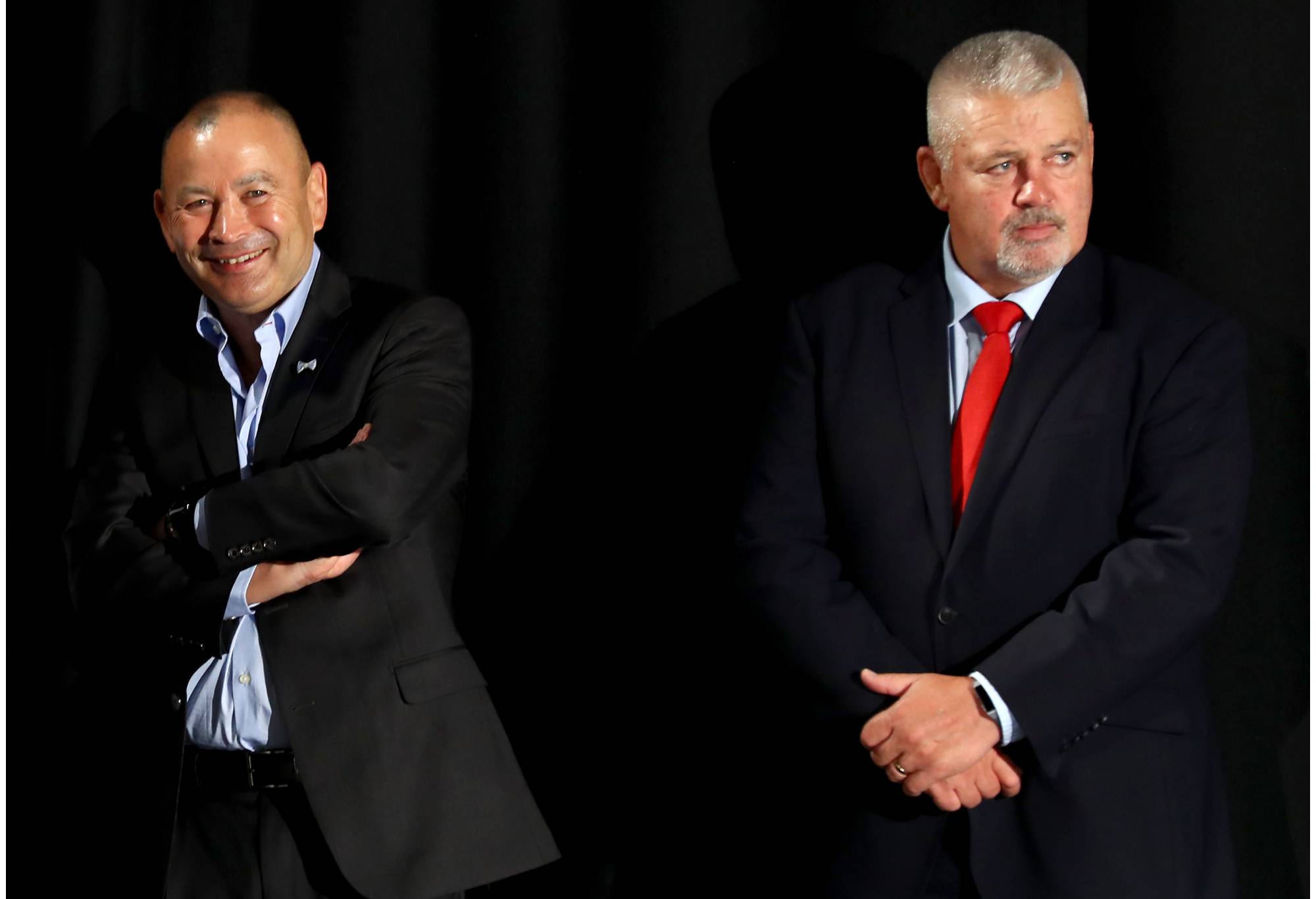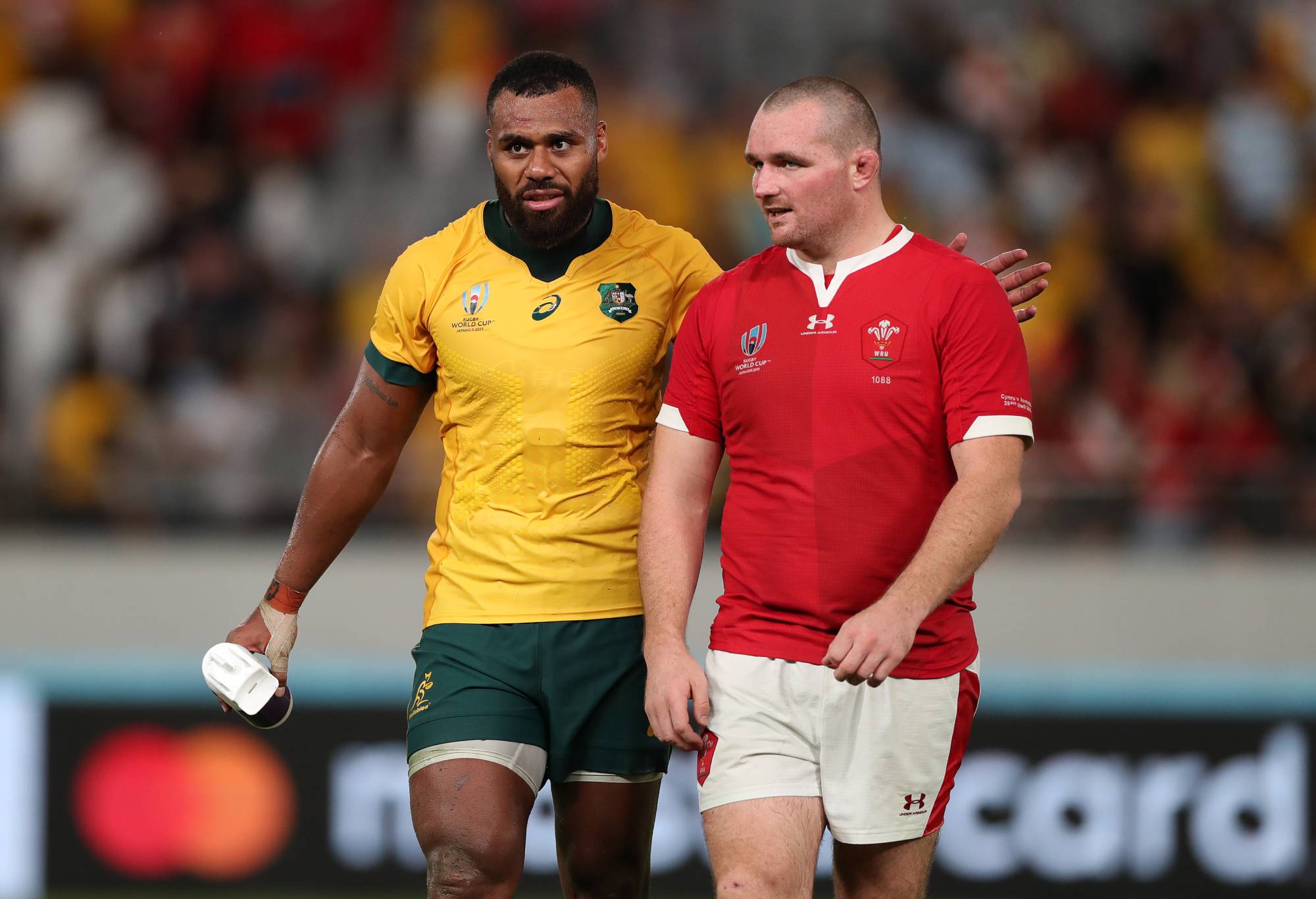Before Christmas, Wales versus Australia meant Wayne Pivac against Dave Rennie. One short month later, it is now Warren Gatland pitted against Eddie Jones. The ‘B’ movie has suddenly recruited some ‘A’ list directors and it is now a big budget enterprise.
There will be needle, there will be pre-match manoeuvring for position and media manipulation aplenty, as two of the biggest coaching names of the professional era go toe-to-toe, trying to find any edge they can in the build-up to the game, and strategies for the match itself. It will be properly grown-up stuff.
Who will gain more from the mad merry-go-round of head coaches? Jones has returned to a rugby nation as happy to be rid of its ‘turbulent priest’, preaching a foreign gospel from the shaky isles, as it is to be welcoming the prodigal son of Randwick back home.
The scene is already set for an intriguing encounter. Jones has the better playing counters, especially at the top end, but Gatland is more familiar with his core group and they will drop back into old habits very easily indeed. Australia has the potential, but Wales has the cohesion.

The next edition between Warren Gatland and Eddie Jones promises to be the most exciting yet after returning to the Wales and Australian coaching positions respectfully. Photo: Clive Rose/Getty Images
Welsh rugby always profited from the influence of ‘The Outsider’, both in its golden period of success in the 1970’s and throughout the professional era. The dominance of the seventies was built around two coaches whose faces never fitted with the administrative powers-that-be at the Welsh Rugby Union.
Carwyn James and Ray Prosser were not political networkers and they never coached their country, but they were the thought-leaders and chief influencers. They built and serviced the coaching engine that drove the game forward at club level, and James was recognised by the British & Irish Lions in 1971, even as he was ignored by the WRU.
While James promoted the principles of counter-attack in the back-line at Llanelli, ‘Pross’ dug out the rock-hard diamonds from the mines and steel-works and moulded them into a ferocious pack of scrummagers and maulers at Pontypool. Others gleefully took the credit, but it was James and Pross who did the actual work.
Fast forward to the professional era, and head coaches from New Zealand have been the chief stewards of the game at national level for 23 of the 28 years of professionalism in the Principality. Sir Graham Henry, Sir Steve Hansen, Warren Gatland CBE: serial World Cup winners and Six Nations champions.
The short periods where a native Welsh coach presided ended in chaos and recrimination. ‘Ted’ was appointed on the back of a 96-13 loss to the Springboks in June 1998, in which the South African coach Nick Mallett branded Wales ‘the worst international team I have ever seen’. When the two teams met again only five months later with Henry in the hot seat, the gap had narrowed to only eight points.
Mike Ruddock coached Wales to its first Grand Slam in 27 years in 2005, but he resigned less than a year later against a backdrop of political back-stabbing worthy of Shakespeare’s darkest tragedies. His replacement Gareth Jenkins fared even worse, losing to Fiji at the 2007 World Cup at the pool stage. Wales didn’t get out of their group, and Jenkins was sacked in the car park, before he could even get back on the team bus.
Apart from that glorious shooting star in 2005, periods of success have all been associated with the presence of The Outsider at the coaching controls. The main outsider has been ‘Gatty’, who coached Wales to four Six Nations titles, three Grand Slams and two World Cup semi-finals in his 12-year tenure between 2008 and 2019. He will fit right back in, like a glove on a grateful hand, but nobody can measure the impact Jones’ return to the Wallabies with the same certainty.
England-Wales encounters between 2016 and 2019 shook out five wins to two in Jones’ favour but they were always close games: only a four-point margin between the two nations over the seven matches.
The signs of Gatland’s ‘Welsh web’ cohesion are already there. He has his coaching staff in place, having re-appointed his 2017 attack coach Alex King, and unearthed the closest like-for-like available to Shaun Edwards on the other side of the ball; ex-Leaguer Mike Forshaw, who runs one of the meanest and most physical defences in the English Premiership with the Sale Sharks in Manchester. They will join forwards coach Jonathan Humphreys and Gatland’s old skills coach Neil Jenkins in a solid, purposeful-looking backroom.
“I’m really looking forward to the challenge ahead. I can’t wait to meet the players and start working with a really talented squad,” said Forshaw in a statement-of-intent on his appointment.
“I played in Cardiff in 2003 and it’s an incredible place to play rugby. I want to get these lads defending with real energy and I want them to be excited about their defensive work.
“If we can do that then I really think we can take some big steps as a team and achieve something special, because the talent is there.”

Samu Kerevi and new Wales captain Ken Owens could once again square off at another World Cup. Photo: Dan Mullan/Getty Images
Gatland will be going back to his old ways and he will be looking to tried-and-trusted players to execute his plans.
Several Gatland favourites are back in the Six Nations squad, as if their old coach has never skipped a beat, as if the Wayne Pivac era was just a bad dream: Wyn Jones, Rhys Carre, Leon Brown, Ken Owens, Taulupe Faletau and Aaron Wainwright up front; Rhys Webb, Leigh Halfpenny and Liam Williams behind.
The only significant absentees from his last term-of-office are Josh Navidi in the back-row and Jonathan Davies at centre, but the essential tactical signatures will be the same.
Wales will go back to starting two natural open-sides in the back row – where Gatland can pick from three outstanding operators in Jac Morgan, Tommy Reffell and Justin Tipuric – and rely on them to choke off the width of the field on D.
All three played in the recent Heineken Champions Cup between Leicester and the Ospreys. Between them, the new kids on the block (Morgan and Reffell) accounted for 28 tackles and five turnovers on defence, while Morgan was the dominant forward runner on either side with 15 carries for 47 metres and eight tackle breaks.
Wales will use the boots of Webb and Biggar in between the two 40m lines and take no chances. 86-cap Owens will be the captain of the side with veteran support from 155-cap Alun-Wyn Jones, 103-cap Biggar and 109-cap George North. They will become Gatland’s boys again, in double-quick time.
The worst scenario for Australia would be a repeat of the Wales-England game from the 2019 Six Nations, where Gatland’s Wales kept their composure better as the pressure mounted, took control in the air and on the ground and slowly strangled Jones’ England out in the second period.
In the back row, one of the twin Welsh open-sides, Tipuric, is getting back to his best after recovering from what appeared to be career-ending shoulder injury:
If ‘Tips’ can forge as productive a relationship with Morgan or Reffell as he enjoyed with Navidi, it will spell trouble for the Wallabies. The defensive trifecta of those two plus skipper Alun-Wyn Jones, were key to their victory back in 2019:
First Tipuric (in his trademark blue hat) chops at Billy Vunipola’s ankles on a kick return, with Alun-Wyn providing typical nuisance value at the breakdown, then Navidi is up to make a conclusive stop on second phase. When the play comes back to the short-side on the next play, the Wales number 7 is back on his feet to drag Tom Curry down and spoil the ruck ball for Ben Youngs.
The trio, working in concert, became something of a Bermuda triangle for English attacking hopes:
In the first example, Navidi stops Manu Tuilagi dead in his tracks on first phase from lineout and AWJ and Tips are there to lock up George Kruis above ground for the maul turnover. In the second instance, Alun-Wyn is supplying the defensive interference at the ruck and the two Welsh open-sides are leading the pressure from the line on next phase.
England could not escape the deadly pincers of the Wales numbers 6 and 7 however hard they tried, not even in the person of Owen Farrell:
In the air Wales full-back Liam Williams was the undisputed king, both on counter-attack with ball in hand and regathering possession from his own kicks:
It was no great surprise when Wales used the boot to orchestrate the final coup de grâce:
Summary
The Warren Gatland blueprint is familiar, powerfully simple but fundamentally limited in scope. It doesn’t work against teams from New Zealand, any better than it succeeded when Gatland tried to bring it back to his native Chiefs in Super Rugby. Wales lost all 12 games they played against New Zealand during his first tenure by an average margin of 20 points, and his homecoming to the Waikato generated a measly 31% win rate.
The bare-faced truth is that New Zealand was not, and is not compatible with the coaching philosophy ‘Gats’ had developed in Europe. It spat out the emphasis on kicking and defence like a bad case of food poisoning.
Gatland will be coming home by returning to Wales, the largest single refuge for ‘The Outsider’ in UK professional coaching. The Welsh coaches and players will welcome him with open arms and slip back into his set of requirements as easily as a favourite pair of slippers by the fire-side.
And therein lies the danger for Eddie Jones’ Australia. If Gatland can extend the longevity of his key players to September 2023, he will be in business. He will benefit from more cohesion than Jones will be able to muster over a mere five preparatory matches.
But by the time the World Cup arrives, Alun-Wyn Jones will be 38 years old and Gatland’s anointed captain Ken Owens will only be one year younger. Justin Tipuric will be 34, the same age as two main halves, Rhys Webb and Dan Biggar. If the creases of old age begin to show, and incomparable leadership and experience turns to athletic infirmity, you can forget it.
It will be a race against time. Does Jones have enough time to get his players and coaches on the same page in time for the World Cup? Can Gatland cryogenically freeze his icons for long enough to thaw them out in prime form for France next September? If both can achieve their aims, the coaching finale that arguably should have featured in Japan 2019 may yet occur at the pool stage in 2023 at the Parc Olympique Lyonnais, in the heart of France.































































































